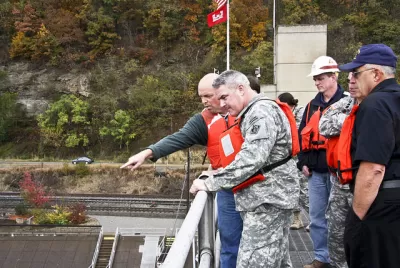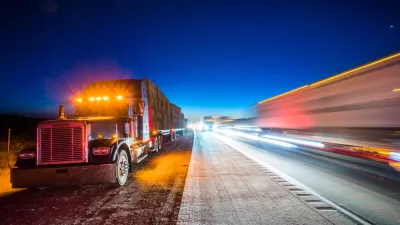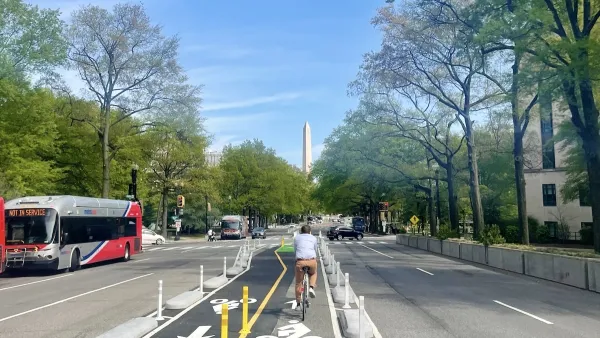Inland waterways have capacity to spare to help deal with an expected surge in freight movement around the country. Some TLC will be required to maximize that potential, however.

"As projections show a steep increase in freight movement over the next few decades, stakeholders representing inland waterway transportation said they are well-positioned to handle the growing demand but that the federal government needs to help them invest in the projects that will keep things running smoothly," reports Alexander Laska.
Laska is sharing information presented at the TRB Annual Meeting session on the subject. The key takeaway from the session: freight tonnage is growing quickly—expected to rise 40 percent by 2045—but freight movement on inland waterways has been declining and is operating under capacity.
The session also focused on the federal investments that could maximize the opportunity for inland waterways to remove some of the anticipated stress on the national highway system.
FULL STORY: Inland Waterways Stakeholders Highlight Federal Funding Challenges

Maui's Vacation Rental Debate Turns Ugly
Verbal attacks, misinformation campaigns and fistfights plague a high-stakes debate to convert thousands of vacation rentals into long-term housing.

Planetizen Federal Action Tracker
A weekly monitor of how Trump’s orders and actions are impacting planners and planning in America.

In Urban Planning, AI Prompting Could be the New Design Thinking
Creativity has long been key to great urban design. What if we see AI as our new creative partner?

King County Supportive Housing Program Offers Hope for Unhoused Residents
The county is taking a ‘Housing First’ approach that prioritizes getting people into housing, then offering wraparound supportive services.

Researchers Use AI to Get Clearer Picture of US Housing
Analysts are using artificial intelligence to supercharge their research by allowing them to comb through data faster. Though these AI tools can be error prone, they save time and housing researchers are optimistic about the future.

Making Shared Micromobility More Inclusive
Cities and shared mobility system operators can do more to include people with disabilities in planning and operations, per a new report.
Urban Design for Planners 1: Software Tools
This six-course series explores essential urban design concepts using open source software and equips planners with the tools they need to participate fully in the urban design process.
Planning for Universal Design
Learn the tools for implementing Universal Design in planning regulations.
planning NEXT
Appalachian Highlands Housing Partners
Mpact (founded as Rail~Volution)
City of Camden Redevelopment Agency
City of Astoria
City of Portland
City of Laramie




























